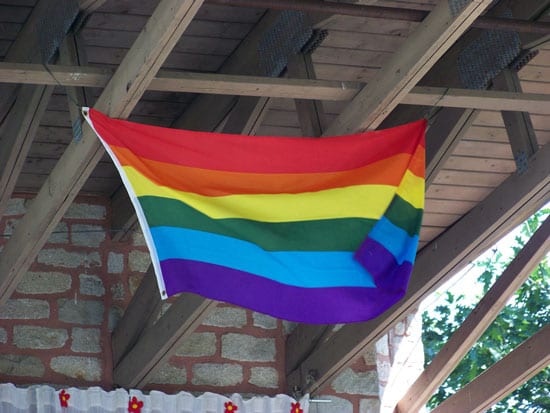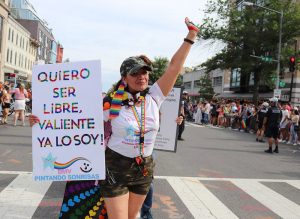
November 5, 2018; Associations Now
According to a recent report released by Funders for LGBTQ Issues, 16 percent of staff or board members of participating foundations identify as lesbian, gay, bisexual, or transgender, but the majority are “in the closet,” which means they have not disclosed their sexual orientation or gender identity to most of their colleagues.
Funded by the Evelyn and Walter Haas, Jr. Fund, the report, titled The Philanthropic Closet: LGBTQ People in Philanthropy, set out to examine “the degree to which LGBTQ people feel included and welcome in the workplace.” Past experience has shown that issues of privacy, the absence of workplace protections, and inexperience with collecting information on LGBTQ populations have led to a lack of research in this area. To address these challenges, Funders for LGBTQ Issues decided to contract an independent organization. SMU DataArts, which is also currently working with Bloomberg Philanthropies on its Arts Innovation and Management Program, was selected to conduct the anonymous five-minute survey.
More than 900 individuals from 36 grantmaking institutions such as the Annie E. Casey, Kresge, and Lumina Foundations participated, resulting in a 34 percent response rate. According to the researchers, this is exceptionally high for a survey of this type and the highest response rate SMU DataArts has ever received. Data was disaggregated into two categories: funders with a social justice or LGBTQ mission, and those with another focus such as art, wellness, or education. Overall, gay, lesbian, and bisexual people make up 16.2 percent of staff and board positions. For institutions with primarily a social justice or LGBTQ focus, individuals accounted for 22.8 percent of staff and board roles. Transgender, genderqueer, and gender nonconforming individuals account for two percent of staff and board positions at participating institutions, compared to 2.6 percent and 1.6 percent at social justice/LGBTQ-focused and other foundations, respectively.
The survey also found that the majority (53.4 percent) of LGBTQ people in philanthropy are “in the closet” at work. However, the number of people who have not disclosed their sexual orientation or gender identity at work is lower at LGBTQ/social justice-focused organizations (44.6 percent). These findings closely mirror previous research conducted by the Human Rights Campaign Foundation, which found that 46 percent of LGBTQ workforce members are in the closet. Individuals in the philanthropic sector are less likely to disclose. For people working at foundations without an LGBTQ/social justice mission, the likelihood of staying in the closet is even higher, at 63.6 percent.
Sign up for our free newsletters
Subscribe to NPQ's newsletters to have our top stories delivered directly to your inbox.
By signing up, you agree to our privacy policy and terms of use, and to receive messages from NPQ and our partners.
Age, status, and seniority also influence whether individuals disclose in the workplace. The more senior a person is within the organization, the more likely they are to be “out.” For instance, 62.5 percent of executives and senior staff were “out” versus approximately one-third of participants working in program, support, and other staff roles. Age was also a contributing factor, with LGBTQ-identifying staff generally skewing younger than their heterosexual colleagues.
The report echoes similar guidance offered in the Building Movement Project’s report, Working at the Intersections: LGBTQ Nonprofit Staff and the Racial Leadership Gap. Only 24 states have laws protecting LGBTQ people in the workplace and disenfranchisement is rampant, so it is critical for institutions to create more inclusive workplaces. Doing so would improve recruitment and retention, mental health, and productivity.
The authors include five recommendations for creating a more LGBTQ-inclusive work environment:
- Incorporate inclusive non-discrimination policies. Enact non-discrimination rules that provide explicit protection based on sexual orientation, gender identity, and gender expression.
- Diversify recruitment efforts. Organizations are encouraged to recruit more diverse samples of LGBTQ people for board, staff, and committee positions through targeted outreach.
- Implement LGBTQ-friendly human resource policies. Extend LGBTQ-related benefits, such as providing health insurance coverage for transition-related procedures or benefits for same-sex domestic partners.
- Enforce equal treatment of discrimination. Instances of LGBTQ discrimination should be handled in the same manner as gender or race-based discrimination.
- Build cultural competency. Offer organization-wide trainings focused on LGBTQ issues to increase awareness and encourage dialogue.
More findings from this survey are expected to be released in the 2018 Diversity Among Philanthropic Professionals Report: A Tale of Two Sectors, from Change Philanthropy, Emerging Practitioners in Philanthropy (EPIP), and Funders for LGBTQ Issues.—Chelsea Dennis













